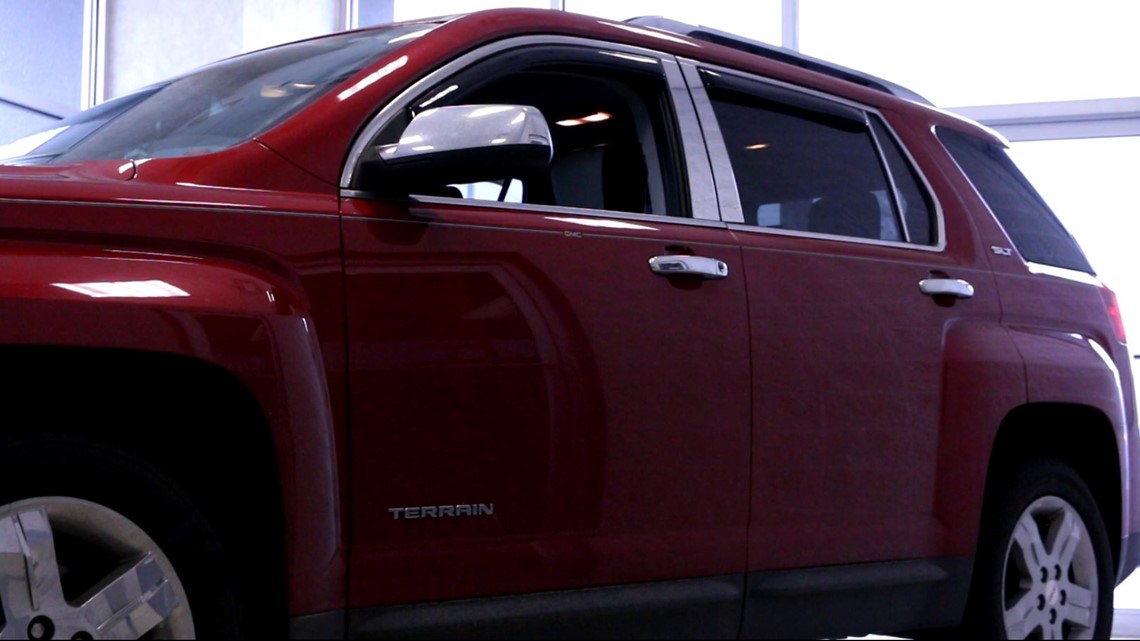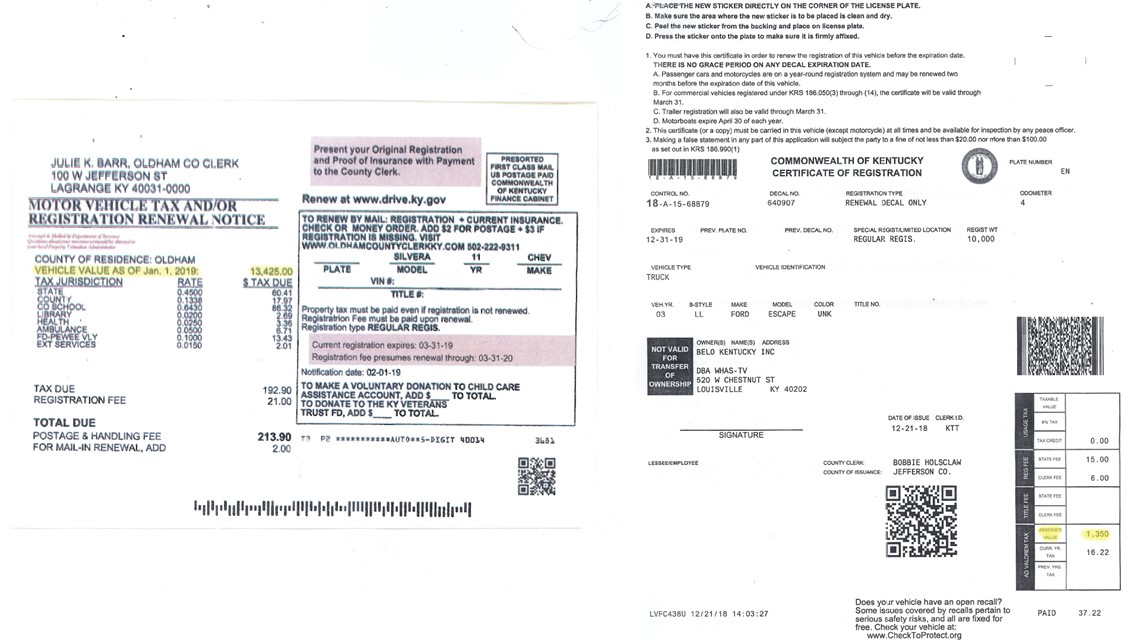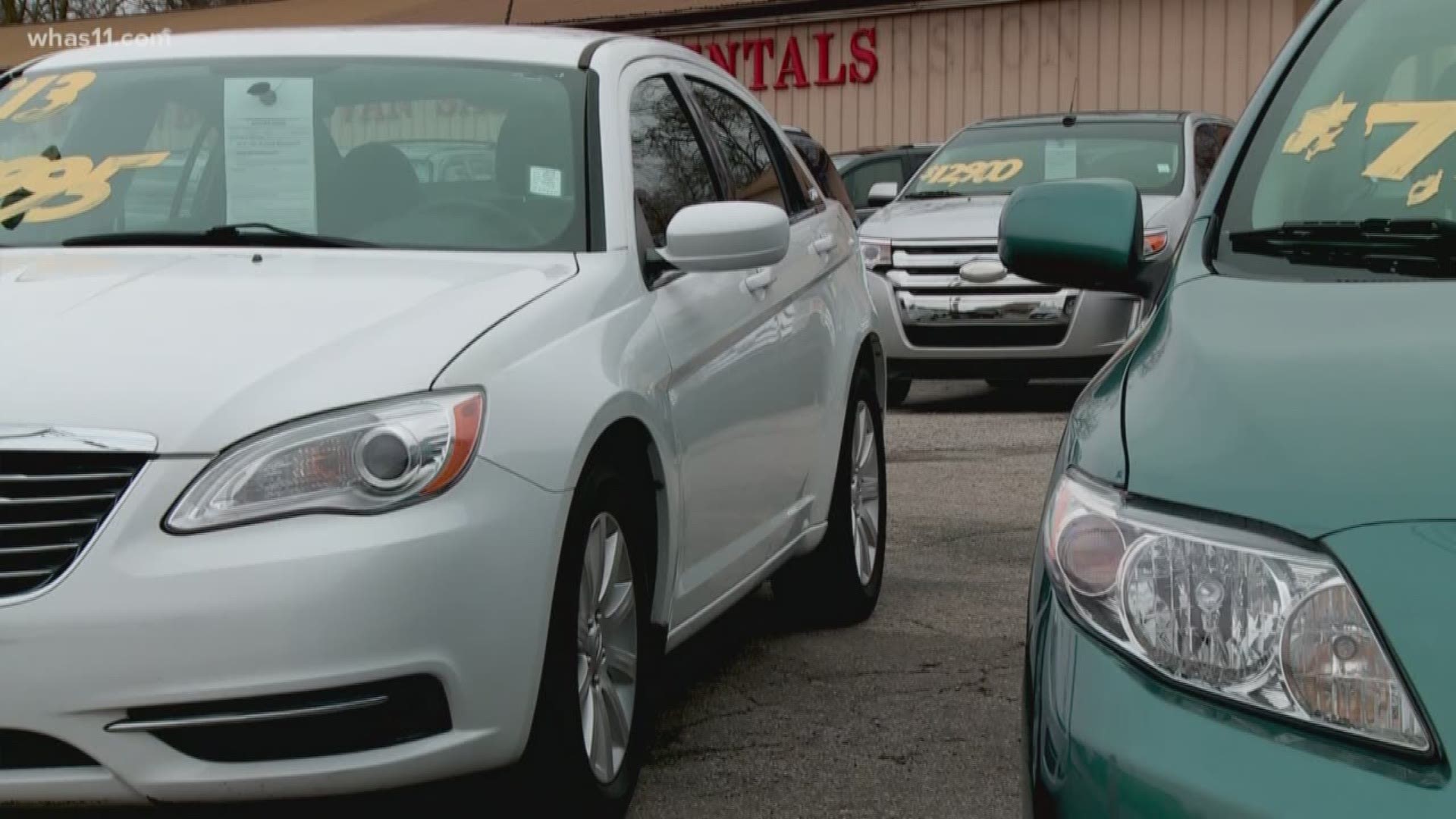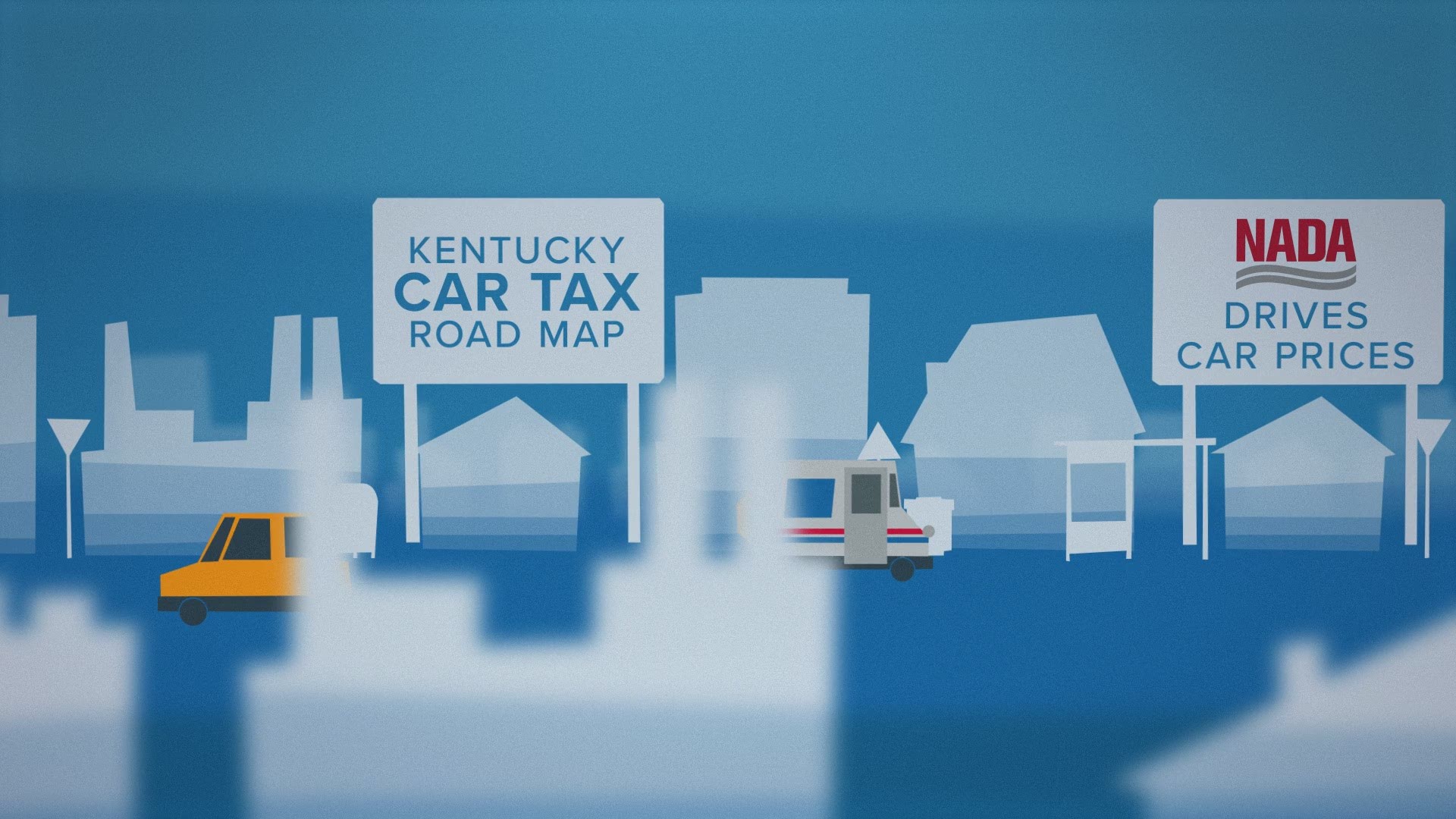LOUISVILLE, Ky. — (WHAS11) -- Purchasing a vehicle from any car sales lot, you're likely going to see inflated prices.
There is the MSRP, the accessories, the warranties but price haggling doesn't have to end with the sale of a vehicle.
Every year, Kentucky taxpayers pay the price for driving a car in Kentucky.
Depending on where you live, you pay a percentage of the cars assessed value, a price set by the state.
“Hmm, I think they have it at about six grand,” Ron Aubrey, a 2004 Jeep Wrangler owner, said. “That's the way the game is played”.
His Jeep was valued at $6,500 to be exact.
Aubrey said his Jeep isn’t worth that much.
“No, no, it's got holes in it and it needs a lot of work,” Aubrey said.
VALUE ASSESSMENT FROM THE DEPARTMENT OF REVENUE
Clearly, the higher your car is valued the more taxes you pay.
“On our projection report, I think it was about $140 million.” Cathey Thompson, the Department of Revenue State Evaluation Division Director, said.
The county clerk gets four percent for collection services on the local level.
For example, a 2016 Mini Cooper assessed at just over $19,000, a 2010 Ford Explorer at $5,650, and a 2006 Hyundai Tucson at an even $2,600.
“It's ‘fair cash’ value,” Thompson explained.
The Commonwealth's Constitution (Section 172) defines ‘fair cash value’ as the "price it would bring at a fair voluntary sale" which the Kentucky Department of Revenue interprets as a NADA ‘clean trade’.
Values based on the ‘clean trade’ condition of a vehicle as of Jan. 1.
Those values defined by the $124,000 annual subscription the Department has with the "National Auto Dealers Association (NADA)."
Here is the definition of a clean trade from a NADA book: ’Clean’ represents no mechanical defects and passes all necessary inspections with ease. Paint, body, and wheels may have some minor surface scratching with a high gloss finish.
In Kelley Blue Book (KBB), ‘good’ condition is closest to NADA’s definition of ‘clean trade’ condition.
But even in KBB’s ‘very good’ condition, the trade price is significantly disproportionate with NADA but more in line with values on Cars.com which uses Black Book.
But on a 2006 Tucson, well, there's still confusion.
Although NADA assessed it in for 2018 at $2,600. The same car just over a year older was actually valued $600 more by NADA when we checked online, meaning the car’s value increased with age.
“I went off the VIN, and I made sure that it was the exact, right model,” John Charlton showed Thompson at the Department of Revenue.
“It leads me to believe that that vehicle has been adjusted at some point,” Thompson said.
The owner is the only owner of the car and swears that adjustment never happened.
Thompson said she is not aware of the NADA giving them over inflated prices.
“From what I’ve been told that NADA more closely represents the ‘fair cash’ value, which is a sale between a willing buyer and a willing seller,” Thompson said.
GETTING AN INDEPENDENT ASSESSMENT
So what can your car really fetch?
We took two of our own vehicles to Neil Huffman Acura at Oxmoor to get their version of an accurate assessment.
First, an inspection of a 2013 GMC Terrain with 78,000 miles on it.


Used car director Brian Ubelhart has assessed thousands of cars and believes it is hard for most vehicles on the road to meet the ‘clean trade’ standard.
“It's almost impossible for any car with several years and tens-of-thousands of miles on it to be a ’clean trade’,” Ubelhart said.
Ubelhart said the 2013 GMC didn't really meet the standard of a clean condition vehicle.
“I wouldn't exactly say clean condition. Like I said, there’s some repairs that are necessary and unfortunately the repairs I'm talking about are costly,” Ubelhart said. “That headlight assembly is going to run about $800, getting this rear bumper repainted is going to probably cost somewhere around $300, so that's why I would classify it as good condition.”
The second car Ubelhart inspected was a 16-year old Ford Escape with 132,000 miles, interior tears, and exterior rust.


“This vehicle is nowhere near ‘clean’ condition, as a matter of fact, it's in rough shape,” Ubelhart said.
Ubelhart valued the second car at $500 but the state said it was worth triple that at $1,350 assessment.
"In the 'clean' to 'excellent' condition, you're looking at 5% of the cars that we look at," Ubelhart explained, “most of the time it's just unrealistic”.
Ubelhart said he believes NADA has always overvalued vehicles.
“The state is just pulling one number out of the air and people need to know that they can dispute that,” Ubelhart said.
APPEALING THE STATE’S ISSUED VALUE
“We'll review the information and we'll need some proof,” John Elgin, Jefferson County MOTAX Director, said.
The Motor Vehicle Tax Director of Jefferson County, John Elgin says higher than usual miles and damage may make the value drop below ‘clean trade’ causing them to pay more in taxes. The taxpayer has the responsibility to question the value if they feel it is unfair.
But the truth is most don't appeal.
“Two reasons, most people take it as sort of a cost of having an automobile, and secondly, they really don't know that they can do it,” Elgin said.
The small print on the back of the mailer sent to the taxpayer is just a line within a line.
Elgin also said the fine print is very hard to find.
THE ROADMAP TO PAYING YOUR CAR TAX
NADA drives car prices and then the value of your vehicle is printed at the Department of Revenue.
The mailer from the Department of Revenue then goes to the taxpayer, that states the amount due.
This is where there's a fork in the road.
The taxpayer can just pay the money to the County Clerk or take the road less traveled and appeal the assessment with the county Property Valuation Administrator within 60 days.
With an adjustment, the taxpayer can then pay the new percentage of taxes due to the clerk.
Without an adjustment, the taxpayer can take the appeal directly to the Department of Revenue in Frankfort.
THE TAXPAYER
“They think it is worth one thing, you can't sell it for that,” Aubery said.
Aubrey also didn't know he could appeal but he's already paid his 2019 car tax of $6,500.
“They want the money, I want to live here,” Aubery said. “Give it to them.”
FUELED PROCEDURE CHANGE
Since we have been digging around and asking questions, we have fueled some change.
The Kentucky Department of Revenue says it will now require County Property Valuation Administrator Offices to keep a record of all appeals, even adjustment appeals that are denied.
BREAKING DOWN OUR INVESTIGATION
HOW YOUR CAR VALUE IS DETERMINED
The Kentucky Department of Revenue pays NADA (National Automobile Dealers Association) to provide it with an annual list of assessments for each vehicle registered in the commonwealth.
NADA is one of several services car dealers, and in this case state government, can use to determine vehicle values.
The Kentucky Department of Revenue is required by the Commonwealth Constitution Section 172 to assess property tax "at its fair cash value, estimated at the price it would bring at a fair voluntary sale".
NADA’s “Clean Trade-In” value is the standard the state uses to tax.
That value is also used to generate taxes on the local level, including county, school and emergency services taxes.
OUR PROCESS
Is the NADA “Clean Trade-In” value a fair assessment of cars across Kentucky?
To find out WHAS11 collected postcard notices and registration forms for about 40 vehicles to compare assessment values.


You can follow the same process to see if you’re overpaying, underpaying, and fairly paying.
CAR VALUATION COMPARISON TEST
- Find the assessed value on your postcard or registration.
- Plug in your vehicle's information on Kelley Blue Book (we used the VERY GOOD condition standard) and note the KBB value.
- Plug in your vehicle's information on Black Book and note the value.
- Then, plug in your vehicle's information on NADA for the note the value.
- Finally, compare all the prices.
NOTE: The value of your car is what its worth on Jan. 1. If you are checking the value based on the miles on your car now chances are the value has decreased slightly from Jan. 1 when the state issued their assessment because there will be more miles on the car. Following the steps above may not be an exact comparison, but it gives a general idea of what’s going on.
DO THE VALUES ADD UP?
Are the values from the different websites close across the board?
Does one service value your car at a higher rate than the rest?
If you're not happy with the results, again, you can appeal the assessment.
We’re interested to see if your car passed the valuation comparison test. Send your results to iteam@whas11.com.




